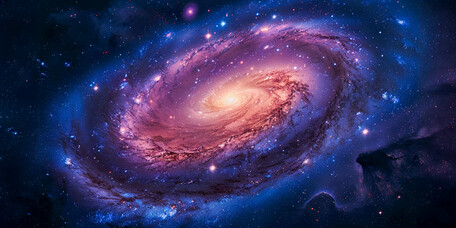Detecting and Constraining Axion Dark Matter by Using the Data of the Inner Galactic Center
- Project Scheme:
- General Research Fund
- Project Year:
- 2024/25
- Project Leader:
- Dr Chan, Man Ho
- (Department of Science and Environmental Studies)

Whether an axion dark matter core exists at our Galactic Centre and constrain the allowed mass range of the ULA.
Observations indicate that some unseen mass exists in our universe. No known particles in the Standard Model share the properties of this unseen mass. The general term “dark matter” has been used by scientists to describe this unseen cosmological mass. Over several decades, various hypothesized particles have been proposed as candidates to account for dark matter. One candidate is a class of particles called axions, which can solve one important problem in particle physics – the CP-violation problem. Moreover, axions have mass, are very stable, and have almost no interaction with normal matter. These properties have made axions one of the most popular theoretical candidates for dark matter. Recent studies have put much focus on two specific types of axion: 1. QCD axions, and 2. Ultra-light axions (ULA). This is because these two types of axion simultaneously satisfy other properties of cosmological dark matter. Therefore, in this project, we will focus on studying these two types of axion dark matter. We aim at detecting the potential signal of axion dark matter and constraining the allowed axion mass ranges using observational data of the inner Galactic Centre. For QCD axions, the theory indicates that axions can convert into photons when there is a strong magnetic field present. A typical neutron star can possess a large enough magnetic field strength to convert axions to photons efficiently. These emitted photons could be detectable by radio telescopes. Since there are a large number of neutron stars located at the inner Galactic Centre, we propose to use the Nanshan Radio Telescope in Xinjiang to observe whether there is any axion conversion signal originating from neutron stars around the inner Galactic Centre. With regard to the ULA, numerical simulations suggest that they would form a constant density core at the centre of a galaxy. The axion dark matter core would affect the orbital precession of a star orbiting the supermassive black hole at the Galactic Centre. By using the data of three stellar orbits surrounding the central supermassive black hole (S2, S12, and S13 stars), we can examine whether an axion dark matter core exists at our Galactic Centre and constrain the allowed mass range of the ULA. Our results may help facilitate the discovery of axions in future experiments. We will share our results via journal articles, academic conferences, and public talks.








